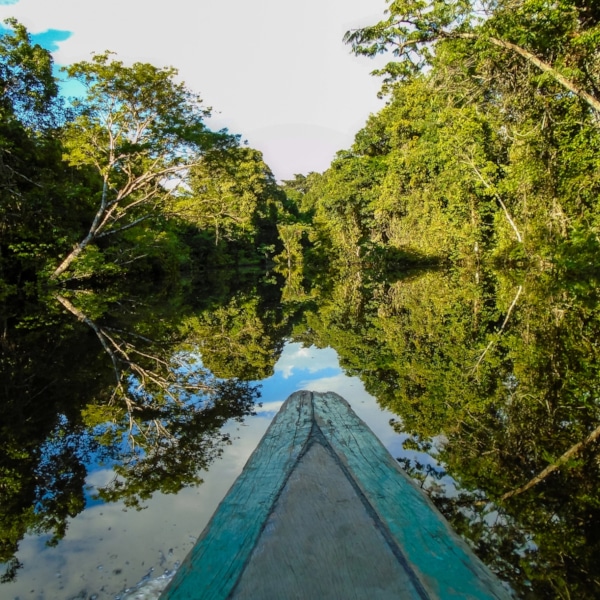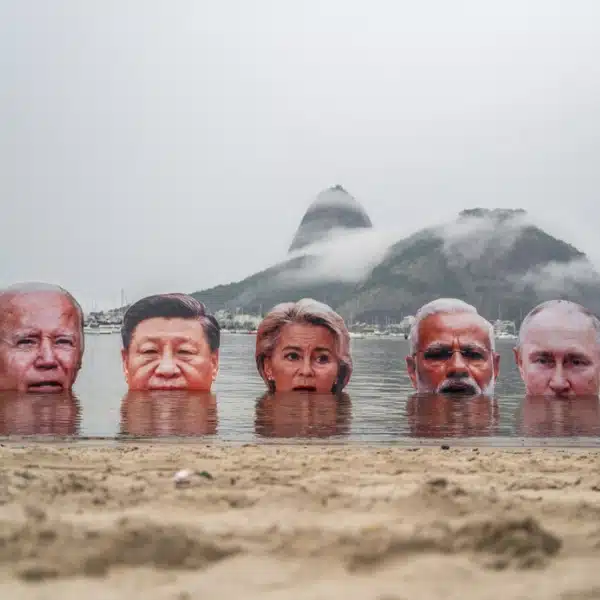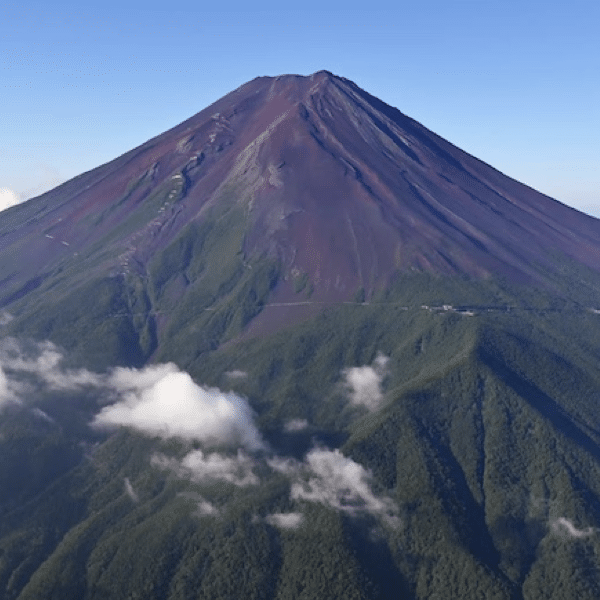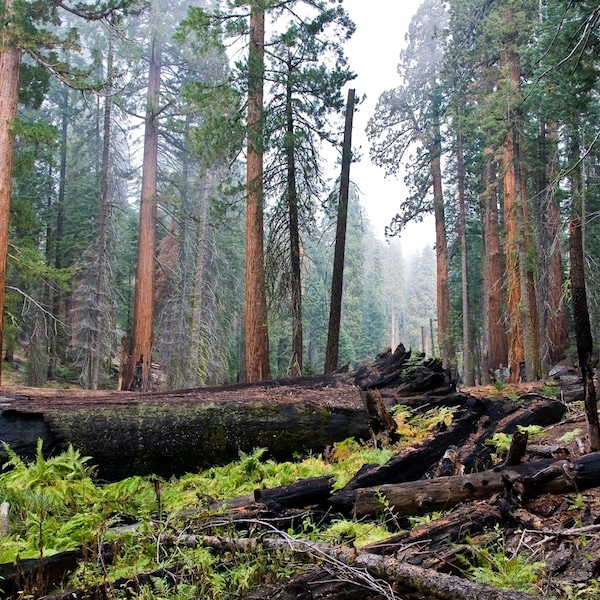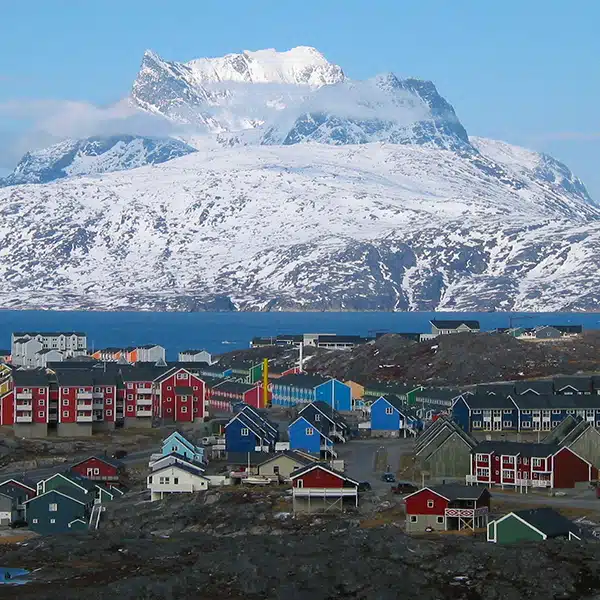The Sony World Photography Awards have just released their stunning shortlisted entries for 2016. This year, a record breaking 230,103 images from all across the globe were submitted to the three categories of Professional, Youth and Open. The competition remains one of the most influential and respected of its kind, and with over 1 million images received since the initial launch, it has grown to be the world's largest photography competition. This year over 270 photographers participated from nearly 60 countries, creating a diverse collection of international moments.
This year an honorary jury, made up of Dominque Green (Consultant, UK) and Sue Steward (Writer/ Curator, UK), have shortlisted some of the exceptional entries from both seasoned and emerging photographers. Overall winners are set to be announced April 21st and will then be displayed at the Somerset House, London from April 22 through May 8th, but in the meantime we have hand-picked some of our favourite images from the spectacular contenders.
Above: Open Shortlist, SplitSecond
Too Much Practice ….. by khairel anuar che ani, Bali
Image was taken in Bali during Melasti Festival. This Festival is conducted once a year in conjunction with Nyepi or Silent Day. These young girls were waiting for their turn to perform. They looked stunning with their bright coloured costumes and heavy make-up on, however the expression on each of the girls' face especially the yawning girl gives this image an extra ‘ummpph'.
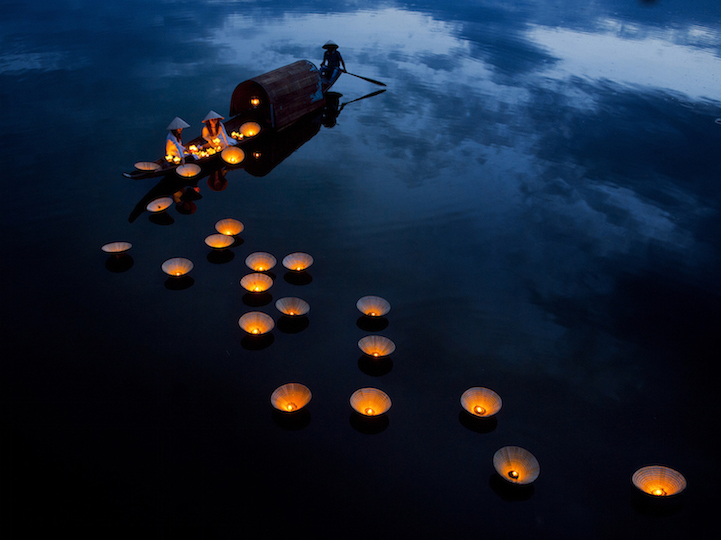
Open Shortlist, Arts and Culture
Lightning Dream by Minh Ngo Thanh, Vietnam
Annually on holidays Vu Lan – signaling parents. people want them to pray for his parents. They were released on river use candles temple.

Open Shortlist, Enhanced
Dream – The Little Dancer by Mickael Szymanski, France
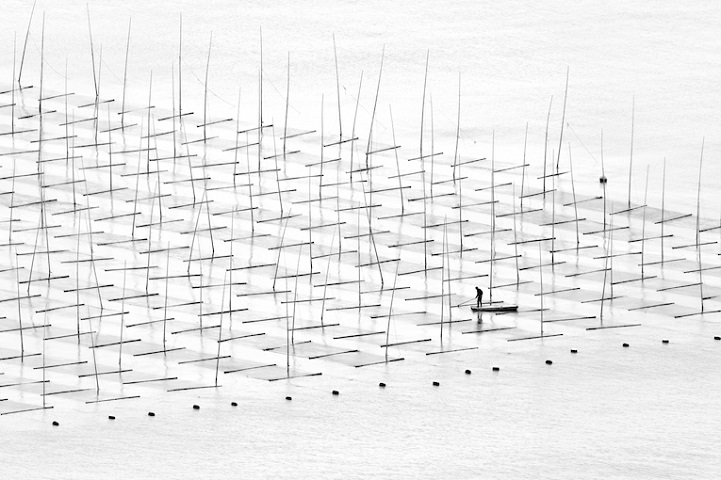
Open Shortlist, Travel
Farming the Sea by Tugo Cheng, Hong Kong
A fisherman is farming the sea in between the bamboo rods constructed for aquaculture off the coast in southern China.

Open Shortlist, Arts and Culture
By Nader Saadallah, Egypt
This is the Impression Lijiang, it is a cultural theatrical show that describes the lifestyle and several interesting traditions of the Naxi, Yi and Bai people in a colourful and flamboyant outdoor production.The show is innovatively staged in the morning and afternoon. Lijiang city, China.
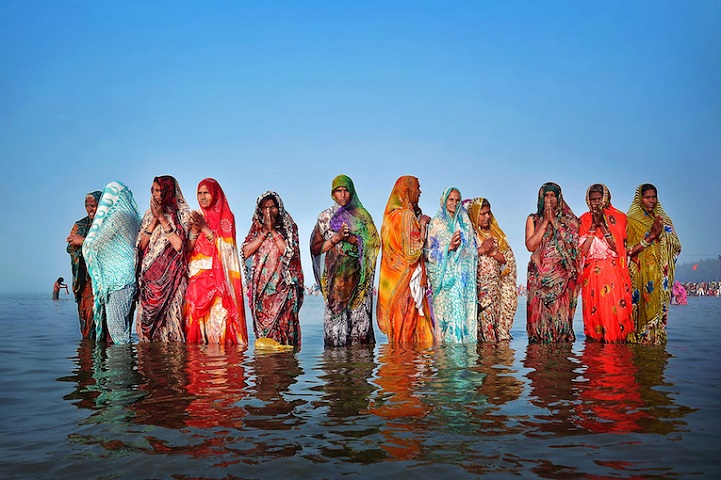
Open Shortlist, Travel
Gangasagar Fair by Abhijit Banerjee, India
Every year in the month of January few lacks of devotee come to Gangasagar fair in West Bengal. It is the 2nd largest fair of India. Captured the devotees while they worship sun just after their bath.
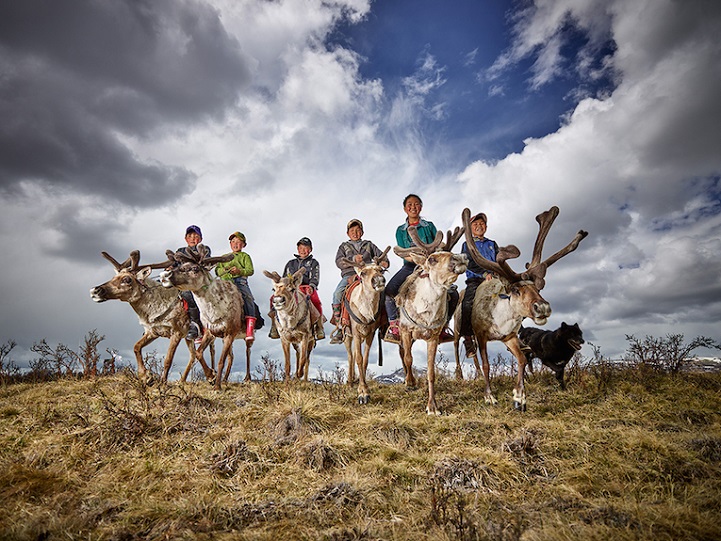
Open Shortlist, Smile
Reindeer Farmer Kids by Peter Voss, Germany
Reindeer farmer kids in Mongolia.

Open Shortlist, Split Second
Creation of Love by Cheung Yin Fang, Malaysia
A boy creatively made a LOVE shape at the River of Tukad Yeh Unda in Klungkung Sub-District, Klungkung Regency, Bali, Indonesia.
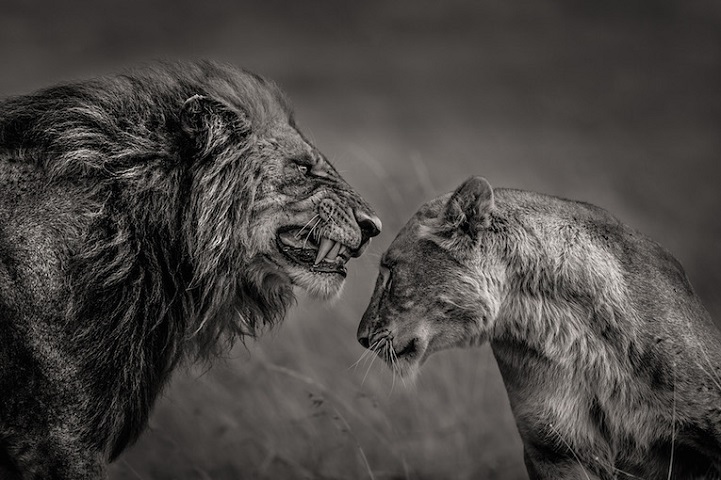
Professional Shortlist, Environment
Art in the Wild- Respect the Tusk by Mohammed Yousef, Kuwait,
Series of Wildlife Images Taken in Masai Mara Reserve in Africa; The love story between the lion and the lioness in Masai Mara is fascinating. Anger in this case is translated as romance and care.
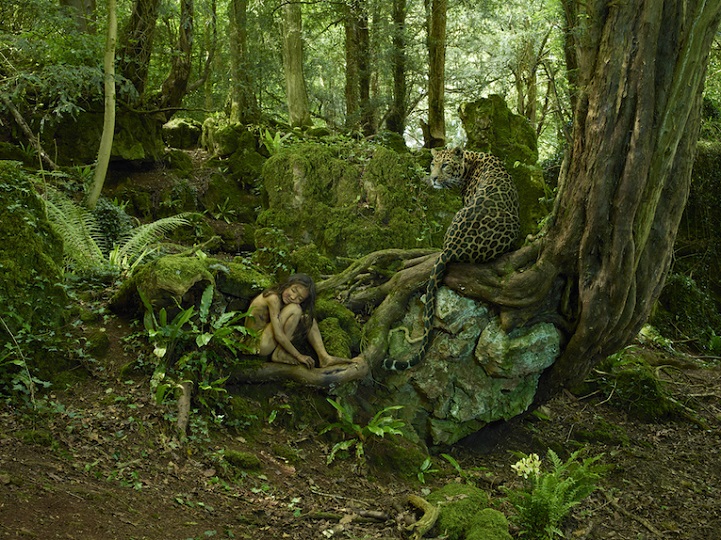
Professional Shortlist, Staged
Feral Children by Julia Fullerton-Batten, United Kingdom
A feral child is one which has lived isolated from human contact, often from a very young age. As a result the child grows up with little or no experience of human care, behaviour or language. Some were cruelly confined or abandoned by their own parents, rejected perhaps because of their intellectual or physical impairment, or the parent's belief that this was the case. In other instances the loss of both parents was the cause. Others ran away after experiencing abuse. Yet more ended up in the wild and were “adopted” by animals as a result of a wide variety of circumstances getting lost, being taken by wild animals, etc.
Documented cases of feral children are geographically spread over four continents, and vary in age from babies taken by wild animals up to eight year olds. Of course, these cases are only known of because the child survived. It is not difficult to think that there are probably untold cases where the outcome was less favourable.As a mother of two young boys I was appalled and intrigued in turn when I first learned about feral children. My initial reaction was to think how parents could either neglect or lose their child. My maternal instinct goes into overdrive when I consider these young people experiencing their lives alone or in the company of wild animals. Then I consider and admire the fortitude they must have shown to survive such isolation and extreme circumstances. In any of the circumstances that I have read about, it completely overwhelms the boundaries of my comprehension.
However, I have risen to the challenge of trying to capture my thoughts photographically about the isolation under which these youngsters found themselves, wondering at the same time if those living in the companionship of wild animals were perhaps better off than those whose young lives were spent with no companionship at all. I chose 15 cases to portray, these range from a girl who as a toddler was confined by her parents to a potty chair for ten years to that of a baby boy who was stolen by a leopardess and found three years later in the company of her and her latest cubs. My idea was not to replicate the exact scenes, but to interpret and duplicate the feelings and actions of each feral child living their experience. Some spent most of their time indoors, even in close proximity to or inside human habitation. Yet others spent the duration of their feral life outside, exposed to the elements, depending on their own ability and that of their wild companions for shelter and food and water, not to mention constantly having to avoid danger and health problems. Life is complex, for some more than others, even when we are considering a normal human life. Its complexity varies from one part of the globe to the other. In considering feral children, who are fully human, at least at the start of their lives, how can we not look at my images and question and wonder about the tenacious survival instincts of these 15 human beings.

Professional Shortlist, Campaign
RIC Hornets by Rob Gregory, United States
These images were created for the Rehabilitation Institute of Chicago's Adaptive Sports Program and the RIC Hornets wheelchair basketball team.
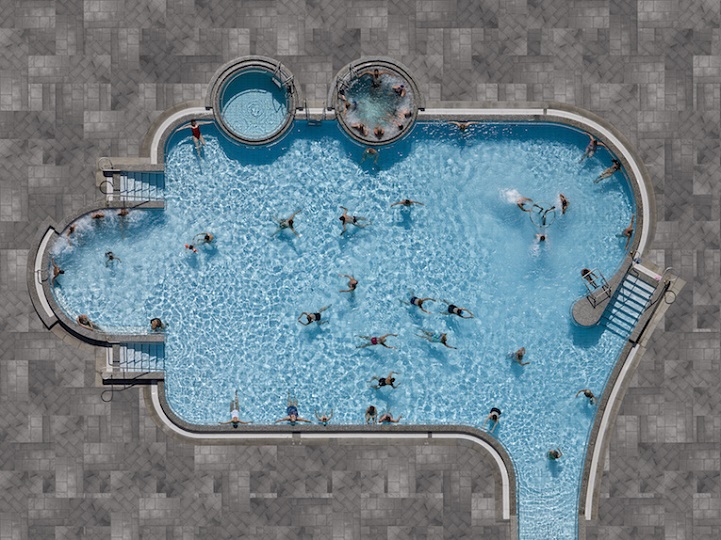
Professional Shortlist, Architecture
Pools by Stephan Zirwes, Germany,
The Pools series is a study of water, one of the most precious resources for life on our planet. The artistic approach of photographer Stephan Zirwes is to show how the important resource is in contrast between being the consummate location for entertainment and the incredible waste of drinking water “not only for being used in private pools but also the trend to privatise what is a public asset and use it for commercial reasons. Public pools can still be a symbol for the importance that water should be free accessible to everyone. The clean formal language and the simple design of the pictures focus our interest on this newsworthy issue with elegance and almost playful. A deep dive into the blue as Zirwes copied parts of the original pool tiles and enlarged them in a simple, visible way to create a kind of mount in patterns.
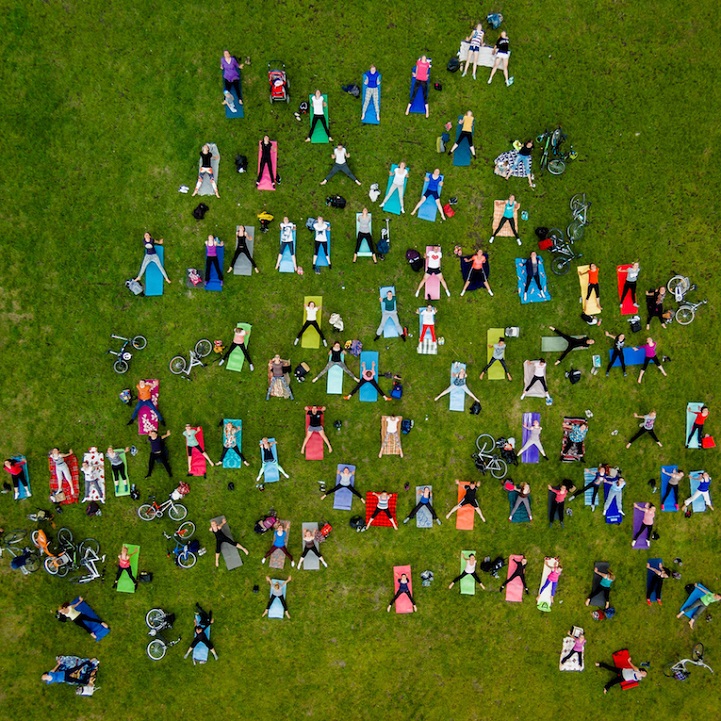
Open Shortlist, People
Open Air by Karolis Janulis, Lithuania,
People on mass yoga exercise in the central park of Vilnius.
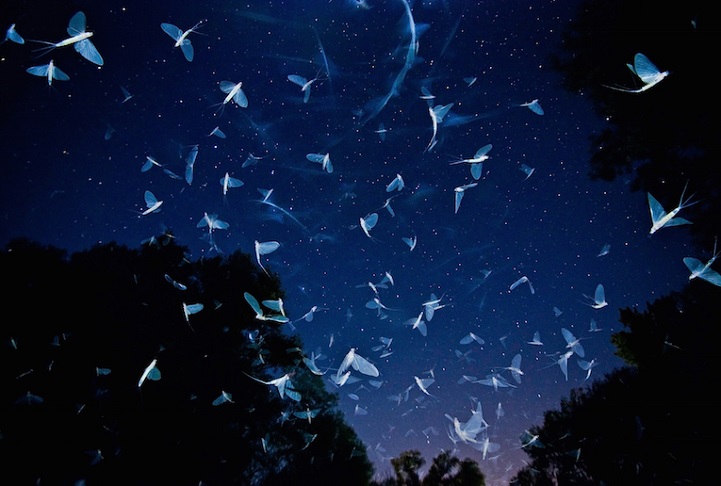
Open Shortlist, Nature and Wildlife
Dancing with Stars by Imre Poty, Hungary
The mass swarming of Danube mayfly (Ephoron virgo) in Ruba and Danube rivers is one of the most exciting phenomenon for me.
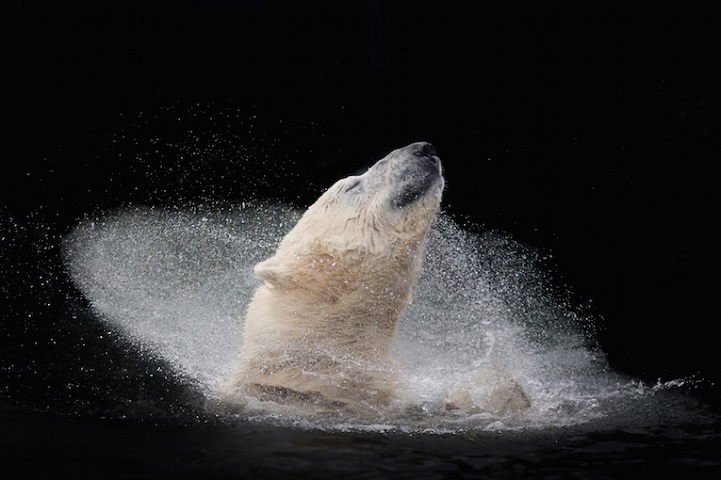
Open Shortlist, Nature and Wildlife
Polar Bear Enjoying His Bath by Michaela mdov, Czech Republic
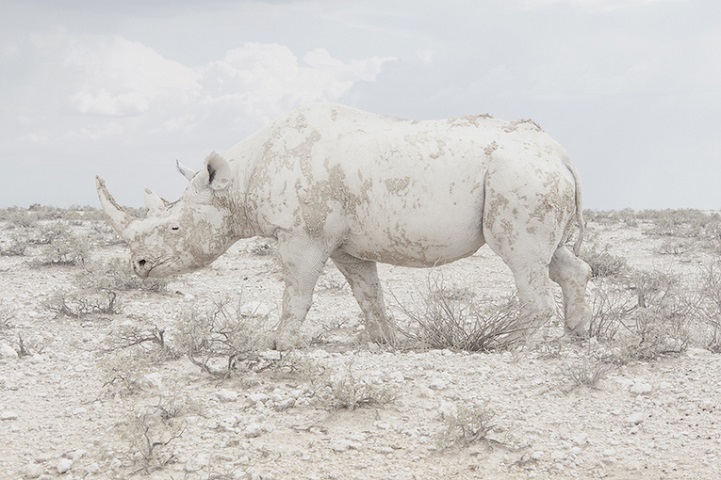
Professional Shortlist, Landscapes
Land of Nothingness by Maroesjka Lavigne, Belgium,
A country named after a desert. One of the least densely populated places on earth. Defined by its rich variety of colors yet in a forever changing, yet completely barren landscape. Namibia's landscape draws you in, through a vast brown plain of scorched earth, and steers you over the white surface of a salt pan to finally arrive in the gold tones of the sand dunes. Patience is required to discover the wide range of Namibia's subtle scenery. It literally takes you hours, driving though nothing, to at long last arrive at…more of nothing. The sight of other people is rare and only the strategically located gas stations are a reminder of the world beyond. This country is in another time zone”time seems to move slower but it feels more logical, somehow. Captivated by these washed out yet delicately colored landscapes, you can drive for hours. Chaperoned by herds of giraffes or zebras, shadowed by flocks of flamingos, suddenly stumbling upon a family of elephants. The animals look up curiously, but soon forget about you and slowly continue their journey, unhurried by your presence, at their own pace.

Open Shortlist, Nature and Wildlife
Blue Moon by Simona Tedesco, Italy
Four centimeters of mightyness that moves slowly and relentlessly on a tree, while the moon rises on the background. The rhinoceros beetle is a nocturnal insect, during the day they stay safe under the cortex of the trees and with the summer they become very active flying at dusk to find a mate.
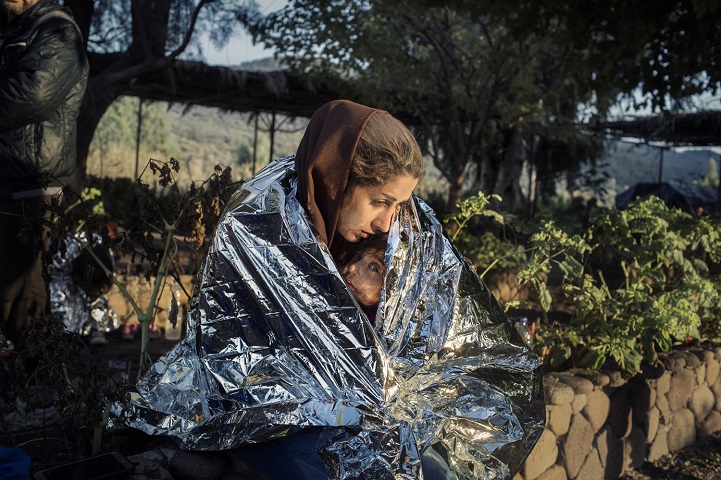
Professional Shortlist, Current Affairs
By Alessandro Penso, Lesbos Greece
A mother and child wrapped in an emergency blanket after disembarking on the beach of Kayia, on the north of the Greek island of Lesbos. According to the UNHCR, approximately 850,000 refugees and migrants, including children, arrived in Greece by sea in 2015. Of these, just over 500,000 landed on Lesbos, a Greek island around eight nautical miles from the Turkish coast. Although at the center of migration flows, Lesbos had nothing to offer the mainly Syrian, Afghan, and Iraqi refugees, asylum seekers and migrants who arrived there. Once they reached Europe's beaches, they were welcomed with a long trek across the islands mountainous interior, followed by days and nights spent in crowded refugee camps, where not even a place in a tent was guaranteed and where basic amenities such as toilets and showers were lacking. But it was in those under-serviced and poorly managed camps that they had to stay, in order to obtain the required registration to allow them to travel legally through Greece and continue their journey of hope towards other European countries, such as Germany and Sweden.
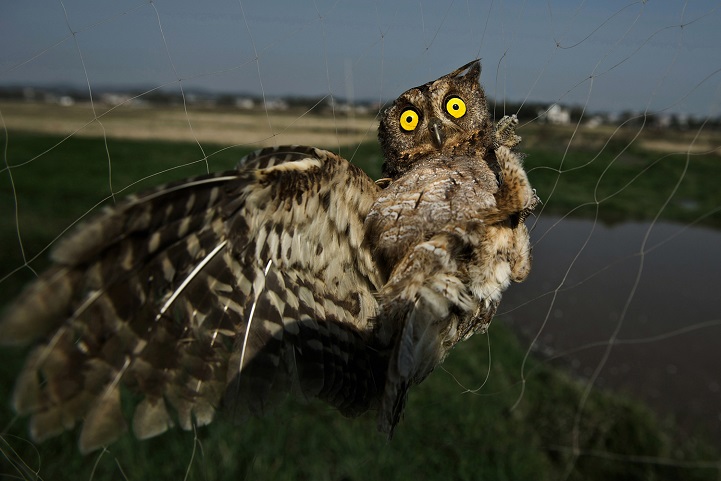
Professional Shortlist, Contemporary Issues
The Death of Migratory Birds by Yong An He, China
In the migratory season, there's still some people to catch the migratory birds by erecting the net in order to get a large profits although the government have prohibited to do that. Thousands of migratory birds are killed each year, and the ecological balance is destroyed deeply. Day by day, the ultimate victims will be the man himself. I wish these photos can play a role for the protection of migratory birds.
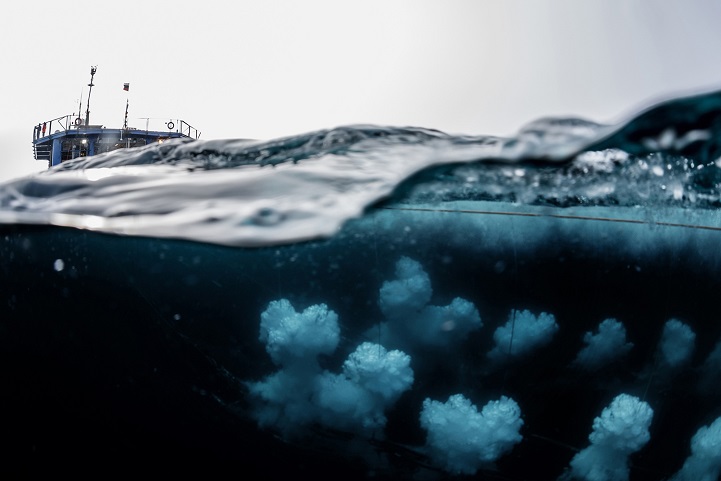
Professional Shortlist, Campaign
Dead End – Oil Exploration in the Arctic by Christian Aslund, Sweden (Calved ice from a glacier at Scoresby Sund fjord, east coast of Greenland)
Climate change is taking its toll on the Planet and its inhabitants. Nowhere else, is this more visible than in the Arctic. On our warming globe, the Arctic experiences temperature rise twice as high than elsewhere. Over the last few decades, Arctic sea ice has experienced a dramatic decline. Its a bitter irony that a rapidly changing Arctic is not seen as a stark warning to our way of life, but instead exploited by governments and oil companies to further drill for the very same oil that caused the melting in the first place. Despite rapid and profound changes, the Arctic is very much still an incredible inhospitable place to drill for oil.
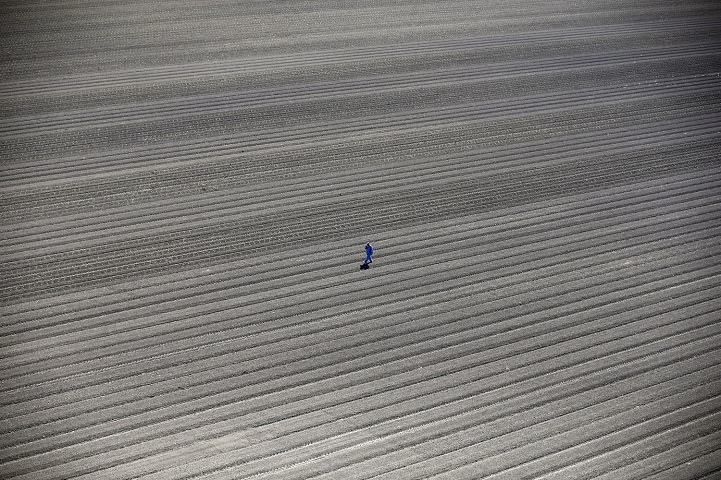
Professional Shortlist, Environment
California Drought From Above by Lucy Nicholson
A worker walks through farm fields in Los Banos, California, on May 5, 2015. Days before, California water regulators adopted the state's first rules for mandatory cutbacks in urban water use as the region's catastrophic drought entered its fourth year. Urban users will be hardest hit, even though they account for only 20 percent of state water consumption, while the state's massive agricultural sector, which the Public Policy Institute of California says uses 80 percent of human-related consumption, was exempted.
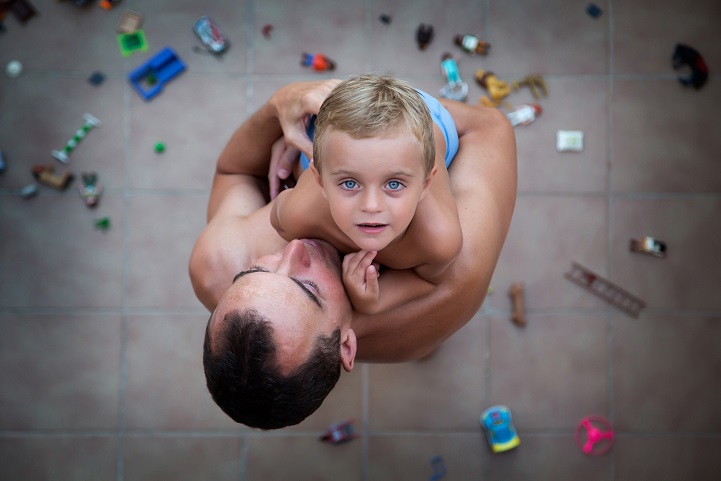
Open Shortlist, People
The secret of his eyes by Daniel Arranz Molinero, Almeria, Spain
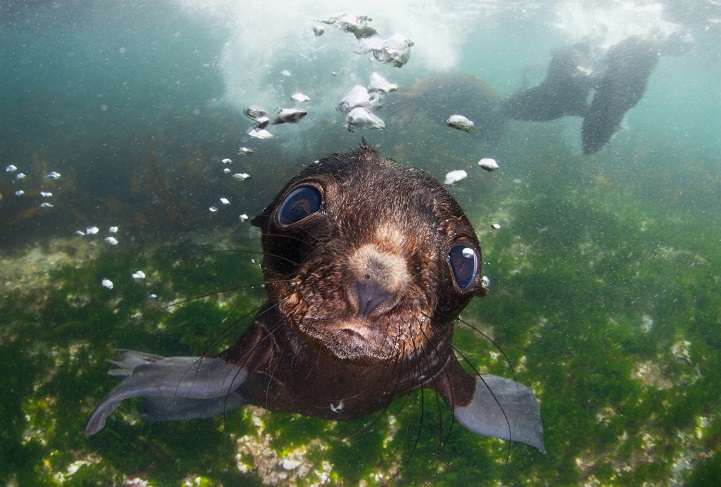
Open Shortlist, Nature and Wildlife
Sea Baby by Andrey Narchuk, Russia,
Bering sea. Commander islands, Baby fur seal
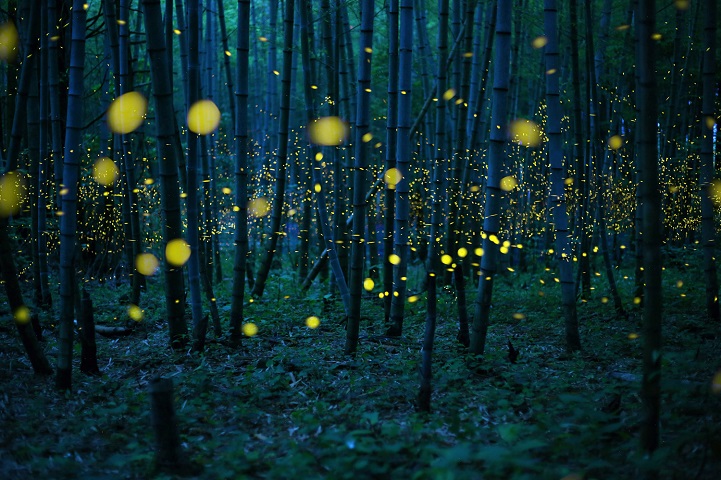
Open Shortlist, Low Light
Enchanted Bamboo Forest by Kei Nomiyana
Firefly season comes around in Japan at the beginning of the rainy season. This firefly is a species called Luciola parvula, found in bamboo forests. The population of these firefly decreases every year in Japan. These may be influenced by environmental destruction. This picture was taken under a little moonlight.
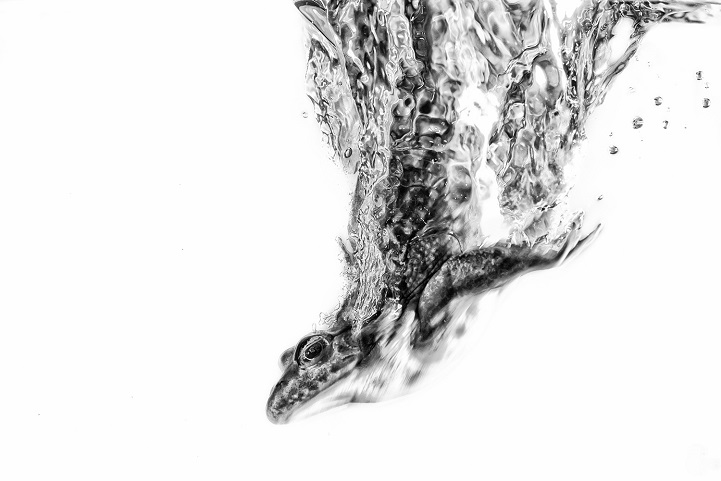
Open Shortlist, Split Second
The diving frog by Franck Tridon
This photo was taken in a paludarium belonging to a friend, a breeder of batrachians and reptiles.
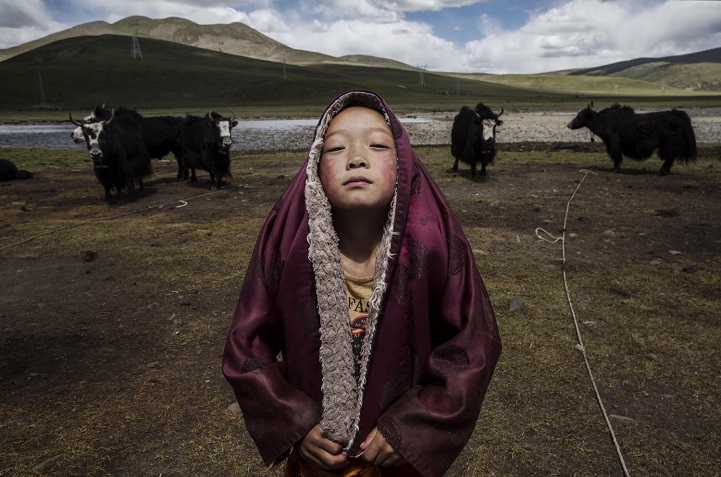
Professional Shortlist, People
Nomadic Life Threatened on the Tibetan Plateau by Kevin Frayer in Yushu, China.
Tibetan nomads face many challenges to their traditional way of life including political pressures, forced resettlement by China's government, climate change, and rapid modernization. The Tibetan Plateau, often called “the Roof of the World,” is the world's highest and largest plateau.
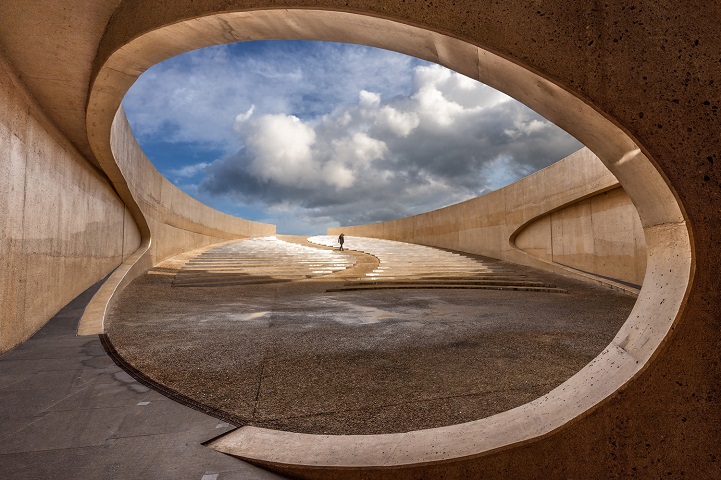
Open Shortlist, Architecture
Stairways from Heaven by Martin Seraphin.
Taken under a bridge in Belgium in April 2015.
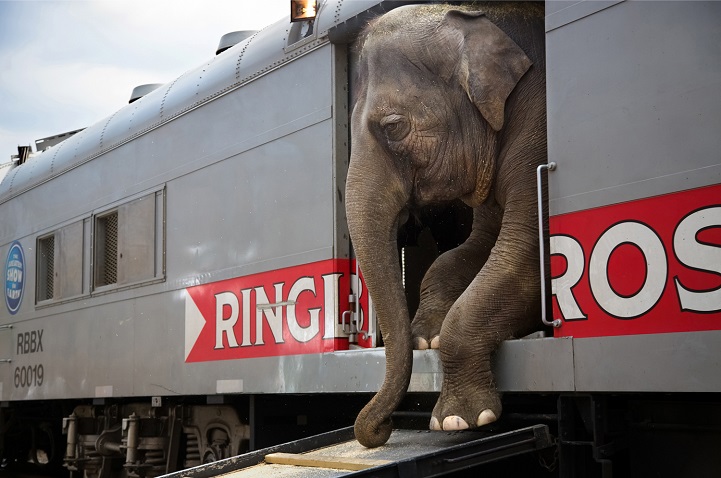
Professional Shortlist, Daily Life
Running Away with the Circus by Stephanie Sinclair, US,
There are more than 300 people that with the Ringling Bros. and Barnum & Bailey circus blue unit, representing 25 different countries and speaking everything from Russian to Arabic to Guarani. A few travel in cars and trailers, but a majority, 270, live on the trains. Most come from multigeneration circus families, to the extent that collectively, the circus staff represents thousands of years of circus history. The men and women all say that only circus people like them can understand the lifestyle. They spend 44 weeks of the year traveling an average of 20,000 miles from coast to coast on a train that is 61 cars “a full mile” long. It is a life of close quarters and rigorous training, a life that many of the performers began in childhood. Their job is to convince the world that the circus still matters.
World Photography Organisation: Website | Facebook
via [Adventures of Yoo, The Atlantic, CreativeBoom]












































































